Beyond human capabilities: how a Kenyan set a world record by running 42 km in 2 hours
The human body is physically unable to run a marathon (42 kilometers) in less than 1 hour and 58 minutes. This was calculated in 1991 by the American physicist Michael Joyner. He took into account three factors: the maximum amount of oxygen that an athlete is able to consume, the rate of lactic acid spread through the muscles and the maximum efficiency of running.
1 hour 58 minutes — under all ideal conditions and an ideal athlete who does not expend energy in his body for anything other than running.
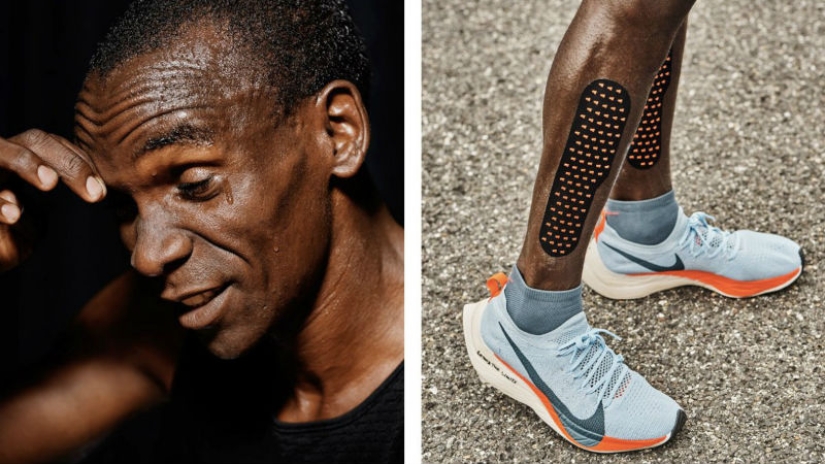 Source: geektimes.ru
Source: geektimes.ru
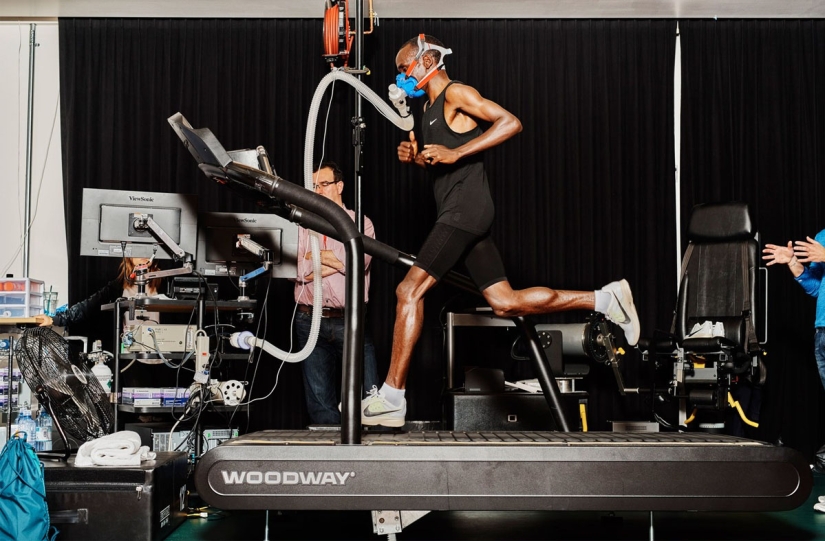
In the first Olympic marathon in 1896, the winner Spyridon Louis from Greece ran the distance in 2 hours and 58 minutes. For a long time, people could not believe that someone could do it faster than in two and a half hours, until Kenyan runners, famous for their ideal complexion for overcoming long distances, entered the business.
The minimum time for which an athlete has ever overcome a marathon is now 2 hours, 2 minutes and 57 seconds.
But in 2014, a group of enthusiasts called Breaking2 decided to break this record. And break through the two-hour limit, which most coaches and athletes consider physically impossible. They raised $30 million for their project. In December 2015, Nike made a statement. She announced that she would help with the rest of the money and, together with the project team, would try to create special sneakers in which a person would overcome the two-hour mark for the first time. The joint laboratory was named the Breaking2 project.
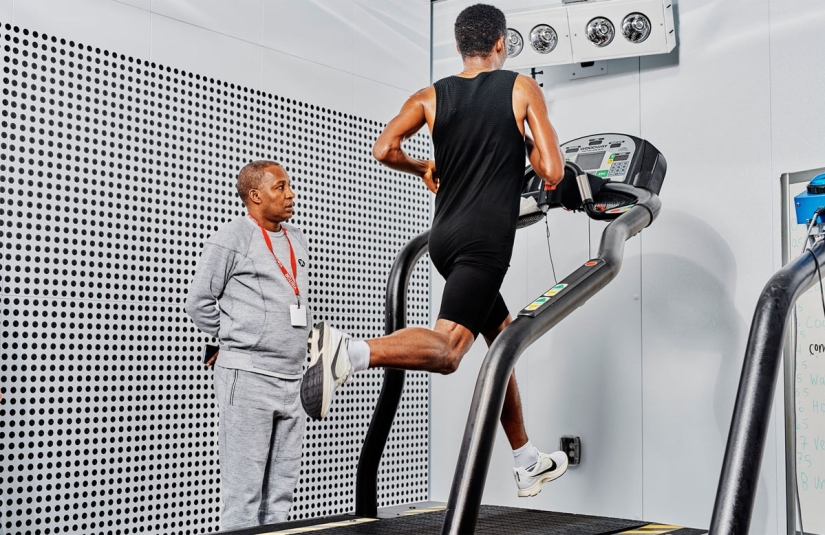 Designers, engineers and scientists worked to help runners improve their results by 4 percent. That should have been enough. Nike spent tens of millions on the technology, and the researchers were so imbued with the idea that they knocked out a tattoo on their wrists with the inscription "1:59:59". The same was carved into the stone above the entrance to their testing laboratory.
Designers, engineers and scientists worked to help runners improve their results by 4 percent. That should have been enough. Nike spent tens of millions on the technology, and the researchers were so imbued with the idea that they knocked out a tattoo on their wrists with the inscription "1:59:59". The same was carved into the stone above the entrance to their testing laboratory.
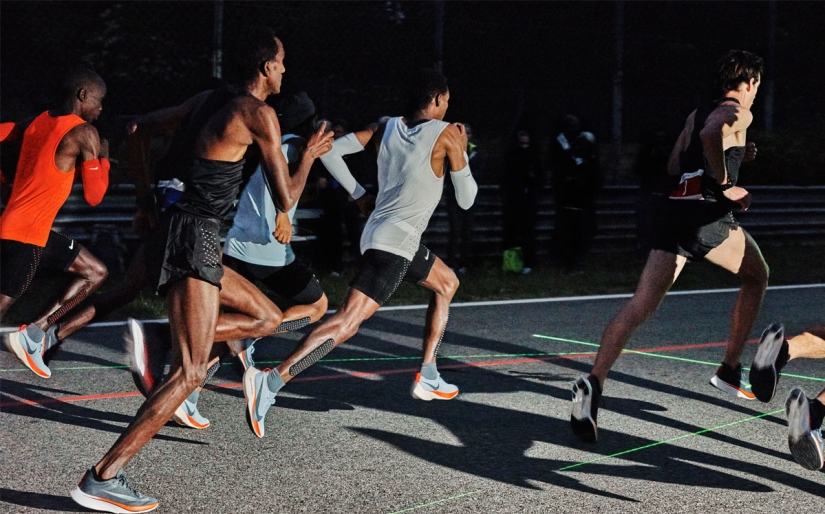 At first, the idea was to make the shoes as light as possible. Every 100 grams in the weight of sneakers, according to their calculations, increases the runner's energy consumption by one percent. A team led by Chinese biomechanist Geng Luo made prototypes of durable and lightweight "flip-flops" made of carbon fiber. They even completely removed the back of the shoe, exposing the heel — because the best athletes in the world use only the front and back of the foot while running. The idea turned into a failure: athletes simply hated shoes, they were too dangerous and uncomfortable, and in order to run in them, they would have to completely retrain.
At first, the idea was to make the shoes as light as possible. Every 100 grams in the weight of sneakers, according to their calculations, increases the runner's energy consumption by one percent. A team led by Chinese biomechanist Geng Luo made prototypes of durable and lightweight "flip-flops" made of carbon fiber. They even completely removed the back of the shoe, exposing the heel — because the best athletes in the world use only the front and back of the foot while running. The idea turned into a failure: athletes simply hated shoes, they were too dangerous and uncomfortable, and in order to run in them, they would have to completely retrain.
Therefore, in 2015, a new strategy emerged - "not light weight, but the right weight." Specially designed foam was added to the shoes, which was called ZoomX. The shoes became heavier, but the athletes' legs were protected for the duration of the marathon. Carbon fiber tubes were also added to the back of the sneakers, which slightly lifted the leg, tilted the runner forward and created the feeling as if you were always running down a hill.
As a result, theoretically, an athlete wearing new Nike shoes could run 4 percent faster. The test results in the laboratory were excellent: the runners liked the new shoes, and biomechanic Roger Cram from the University of Colorado confirmed that the shoes fit for running even better than the previous top sample — Nike Streak 6.
 Since 2016, the selected world's best athletes have started training in new shoes. Each runner in Breaking2 received $750,000 for participating in the tests — and an additional $1 million if he could overcome the 1:59:59 barrier.
Since 2016, the selected world's best athletes have started training in new shoes. Each runner in Breaking2 received $750,000 for participating in the tests — and an additional $1 million if he could overcome the 1:59:59 barrier.
Scientists pinned special hope on Eliud Kipchoge from Kenya, the world cross country champion. Secretly from everyone else, without announcing anything, the athletes of the Breaking2 project in new Nike sneakers went to the most prestigious London Marathon in the world in 2016. As a result, Kipchoge won a gold medal at the marathon, and the other two athletes took silver and bronze. But there was also bad news: none of the runners showed the 4 percent improvement that was calculated in the lab. The real figure was closer to 3-3.4 percent, which might not be enough to overcome the two-hour barrier.
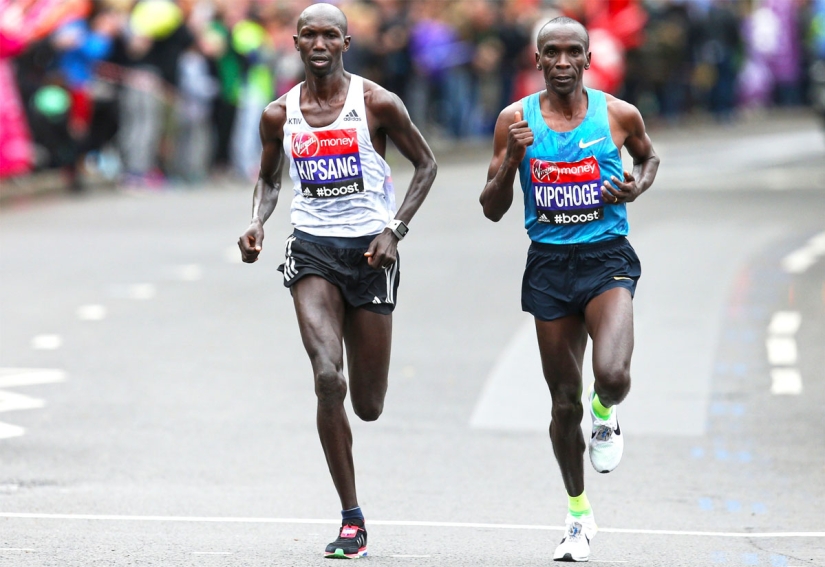 Athletes in new Nike sneakers took all three prizes at the 2016 Olympic Games in Rio. Kipchoge took the gold medal. But his result was far from ideal: 2:08:44. Geng Luo, the head of Breaking2, then said: "If he runs at this speed, it's enough to win all the Olympic Games. But even a 4 percent improvement here is not enough to cross the two-hour line."
Athletes in new Nike sneakers took all three prizes at the 2016 Olympic Games in Rio. Kipchoge took the gold medal. But his result was far from ideal: 2:08:44. Geng Luo, the head of Breaking2, then said: "If he runs at this speed, it's enough to win all the Olympic Games. But even a 4 percent improvement here is not enough to cross the two-hour line."
In March 2017, Nike finally introduced the new shoes to the public. It was called "Nike Zoom Vaporfly 4%" and put a price tag of $ 250. The announcement was accompanied by a short story about the victories of the runners who wore these sneakers. This caused a big scandal. Ross Tucker, the most famous sports blogger in South Africa, created a petition to ban these shoes at competitions, comparing it to doping. "Any device inserted into a shoe should be banned, even if it is a special foam. These runners spend less energy than everyone else, it's unsportsmanlike," Tucker wrote. But international sports organizations have not banned anything, and even the Olympic Committee has not withdrawn medals. The reason is that none of the basic components of Vaporfly were fundamentally new. All modern shoes consist of the same parts, the only innovation of Nike sneakers was their organization and how the carbon fiber plate sat in the foam. "Magic," Geng Luo said, "is in geometry."

On May 6, 2017, Kenyan Eliud Kipchoge took to the track in Italy early in the morning to break the two-hour barrier. The athlete has been preparing for this day since 2014. All the way in front of him was a Tesla with an electronic scoreboard showing the numbers up to 1:59:59. The car was moving exactly at the speed at which the athlete had to go in order to get to the finish line on time. To his left and right, Breaking2 specialists rode bicycles, monitoring the situation.
It was 1:57:05 on the clock, and there was still a kilometer left before the finish. But there were chances: the engineers knew that by the end of the marathon Kipchoge always accelerates.
It took Kipchoge 3 minutes and 20 seconds to complete the last kilometer. The final time is 02:00:25. This is better than the previous record. But the two-hour mark still remains intact.
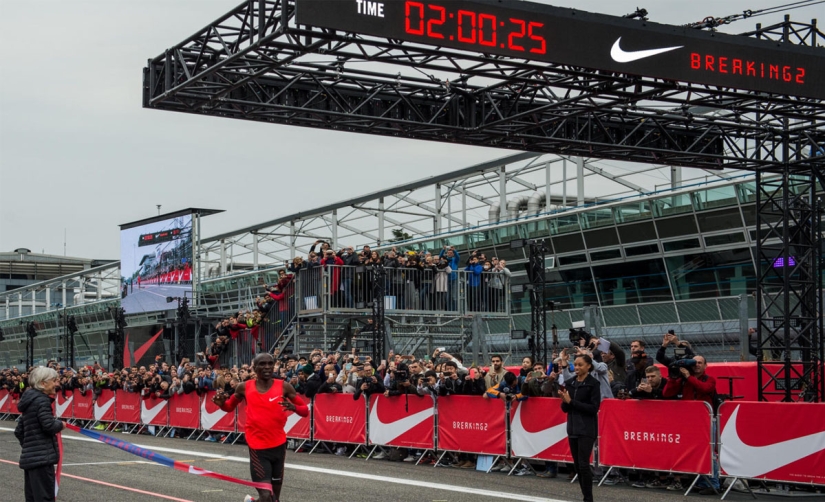 Eliud Kipchoge and Breaking2 scientists still believe that a record is possible with Vaporfly. Now the athlete is training in Kenya, in the forests of Kaptagat, in a specially built laboratory building, in order to cross the two-hour border one day.
Eliud Kipchoge and Breaking2 scientists still believe that a record is possible with Vaporfly. Now the athlete is training in Kenya, in the forests of Kaptagat, in a specially built laboratory building, in order to cross the two-hour border one day.
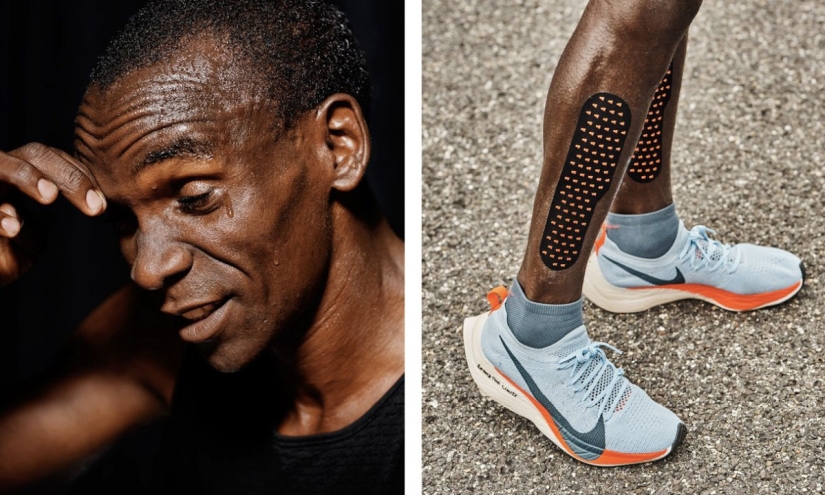
Keywords: Nike | Running | Runner | Sneakers | Marathon | Record | Athletes | Scientists
Post News ArticleRecent articles

Most of us think that the color of the eggshell does not play any role and it is possible not to pay attention. But it's not and ...

The more we rely on technology, the more potential power hackers gain over us. It doesn't matter if their goal is to help or cause ...
Related articles

In the late 80s, the athlete Elena Romanov knew the entire Soviet Union. The athlete from Volgograd was struck by not only their ...

Russia finally established the present summer, and for many it is time to shake off the consequences of prolonged isolation. ...

Everyone likes to say that there is nothing more valuable than human life. But this commonplace truth, known to absolutely ...

Creating a good portrait is one of the most difficult tasks for any photographer. In order to make a really natural and memorable ...